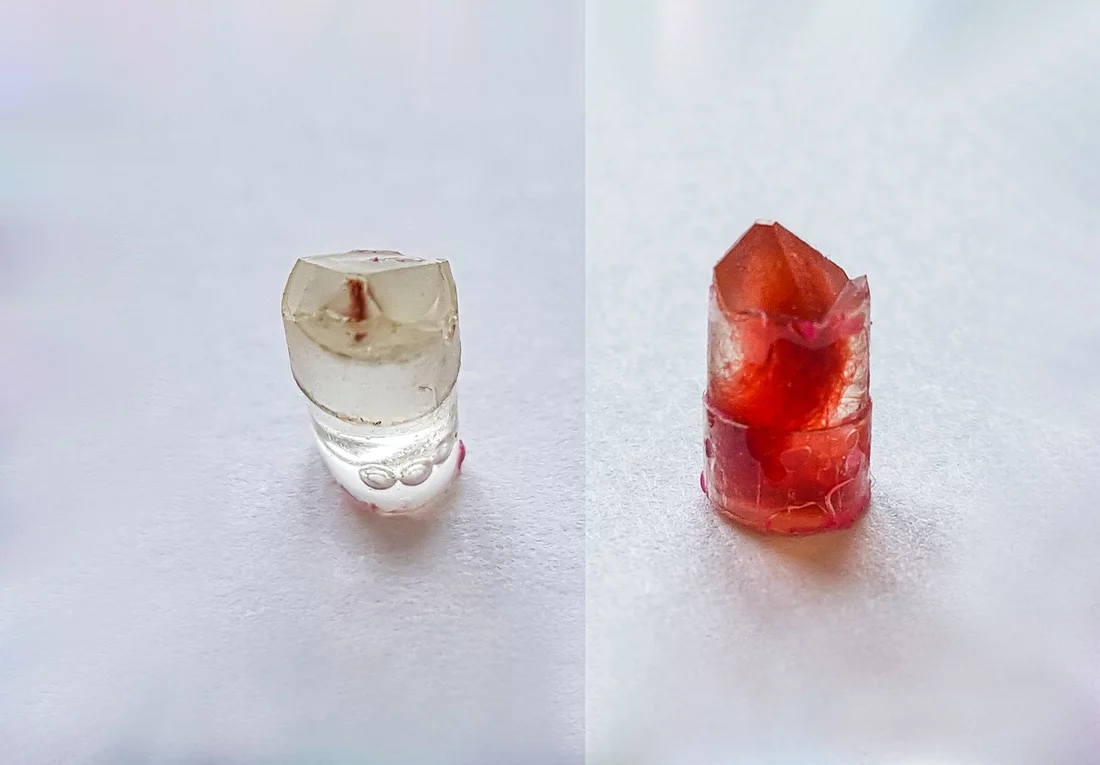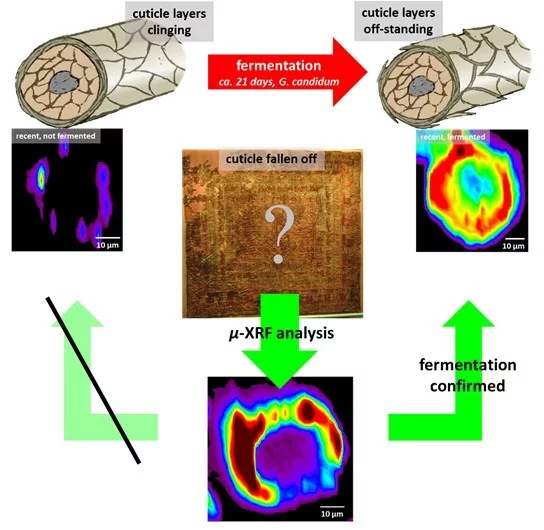The “Pazyryk carpet” at The State Hermitage Museum in St. Petersburg, Russia is one of the most exciting examples of Iron Age Central Asian craftsmanship. It is the oldest known pile carpet in the world (~ 400 B.C.). Although this carpet had been buried in a kurgan tomb under harsh conditions for almost 2.5 millennia, it still exhibits vivid colors. The renowned Swiss newspaper “NZZ am Sonntag” has reported on the outstanding research at PSI.
Experts on traditional dyeing techniques had assumed that this might be related to the use of a special dyeing technique based on previous fermentation of the sheep wool. Fermentation with G. candidum yeast leads to an increased permeability of the wool cuticle layers during the dyeing process. Fermented wool can be recognized by a characteristic abduction of the outermost cuticle layers that is visible by electron microscopy.
It has been possible to link several cultures with the fermentation technique and to track its use back to the 17th century. However, the more extensively the respective textile has been used or exposed to weathering the less color pigments are typically left of the cuticle layers. The Pazyryk carpet has no significant cuticle left at all. Therefore, it was necessary to detect the distribution of the applied dyeing pigments along cross-sections of the respective carpet fibers. High-resolution XRF imaging at the PHOENIX beamline has proven a deeper and more efficient penetration of pigments into the wool fibers when the fermentation technique had been applied.
The current project employed this special combination of high-resolution and high sensitivity to detect an Al distribution along the cross-section of single fibers from the Pazyryk carpet that is characteristic for fermented wool.
The results provide unique insights into the sophisticated craftsmanship of the Pazyryk culture and suggests that the fermentation technique may already been common knowledge amongst Iron Age textile dyers.
Text: Paul Scherrer Institute
Contact
Dr. Andreas Späth
Physical Chemistry II
Friedrich Alexander University Erlangen-Nuremberg
91058 Erlangen, Germany
Telephone: +49 9131 85 20944
E-mail: andreas.spaeth@fau.de
Dr. Thomas Huthwelker
Swiss Light Source
Paul Scherrer Institut
Forschungsstrasse 111, CH-5232 Villigen PSI
Telephone: +41 56 310 53 14
E-mail: thomas.huthwelker@psi.ch
Original Publication
X-ray microscopy reveals the outstanding craftsmanship of Siberian Iron Age textile dyers
Andreas Späth, Markus Meyer, Thomas Huthwelker, Camelia N. Borca, Karl Meßlinger, Manfred Bieber, Ludmilla L. Barkova, and Rainer H. Fink
Scientific Reports, 2021, 11:5141
DOI: 10.1038/s41598-021-84747-z


